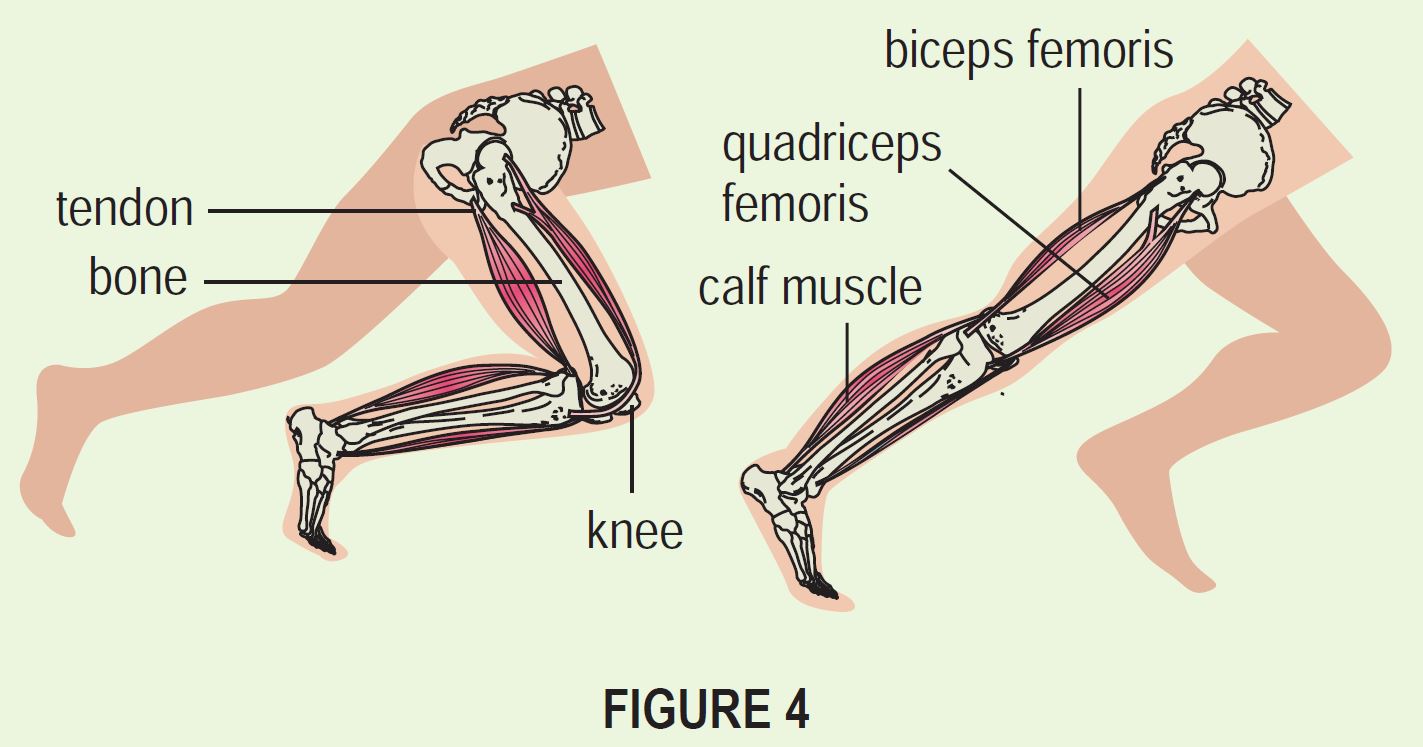Figure 4 shows a human movement.

Based on Figure 4, describe how muscles, bones, tendons, ligaments and joints enable the above movement to happen.
Answer:
• The big and long femur adds strength to support body weight.
• Tendon connects muscles to bones.
• Tendon is tough and inelastic.
• Ligament supports joints for movement.
• The hinge joint at the knee, and the balland-socket joint at the pelvic girdle produce movements.
• The quadriceps femoris and the biceps femoris are antagonistic muscles.
• When the quadriceps femoris or the extensor muscle contracts and the biceps femoris relaxes, the leg is straightened.
• When the biceps femoris contracts and the quadriceps relaxes, the leg is bent.
• When the calf muscle contracts, the heel is lifted.
• At the same time, the foot pushes downwards and backwards.
• The repetitive contraction and relaxation produces movements.
Describe how the earthworm and fish skeletal systems are adapted for locomotion in their respective habitats.
Answer:
Locomotion of an earthworm
• Earthworms have a hydrostatic skeleton.
• Earthworms move with the aid of hydrostatic pressure changes in the body.
• The circular muscles contract and the longitudinal muscles relax antagonistically.
• This causes the hydrostatic pressure to be transferred from the anterior to the posterior.
Locomotion of a fish
• Possesses endoskeleton
• The fish bone provides surface for muscle attachment.
• The left myotome contracts and the right myotome relaxes antagonistically.
• The tail moves to the left and right producing a push forward.